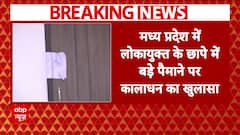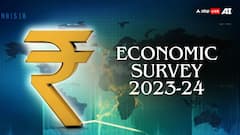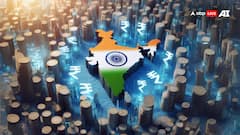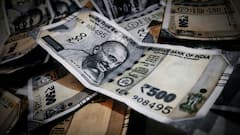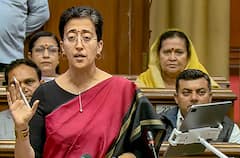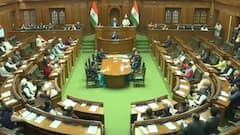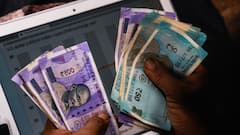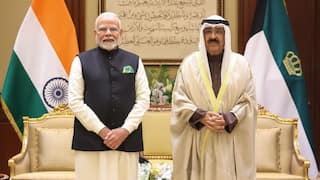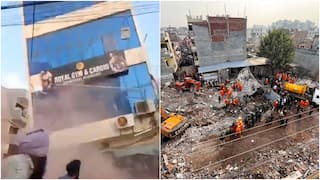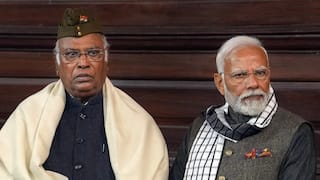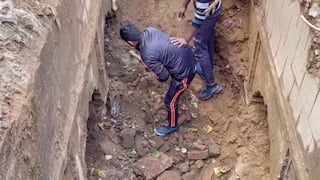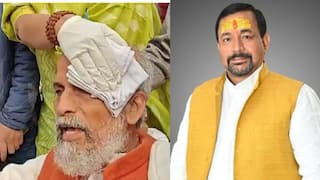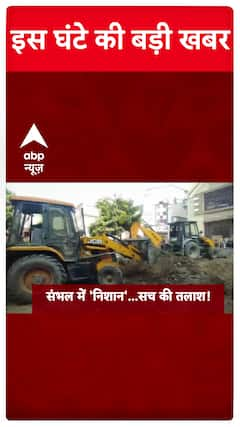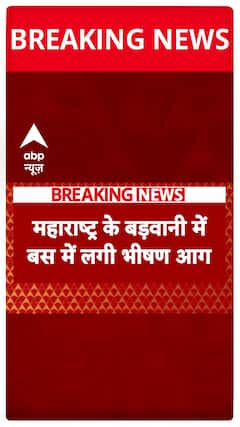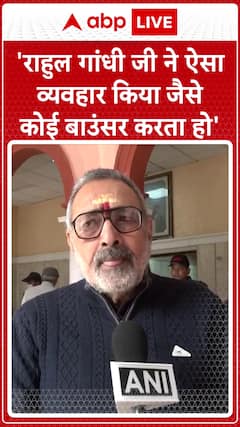Budget 2023: Green Growth, Waste To Wealth, Energy Transition – Major Science Announcements And What They Mean
Budget 2023: Union Finance Minister Nirmala Sitharaman announced that green growth efforts help in reducing carbon intensity of the economy and provide for large-scale green job opportunities.

Union Budget 2023: Union Finance Minister Nirmala Sitharaman made several announcements on green growth during the Union Budget 2023 on Wednesday, February 1. Several experts had expected this year's science budget to focus on green energy and clean water supply, and the Union Budget indeed laid emphasis on these areas.
Sitharaman announced the PM Vishwakarma Kaushal Samman (PM Vikas) Scheme, which will include not only financial support, but also access to knowledge of modern digital techniques and efficient green technologies, among others.
This year's Budget adopted seven priorities, which complement each other and act as the 'Saptarishi' guiding the country through Amrit Kaal, Sitharaman said in her speech. The priorities are 'Inclusive Development', 'Reaching the Last Mile', 'Infrastructure and Investment', 'Unleashing the Potential', 'Green Growth', 'Youth Power', and 'Financial Sector.
Announcements on 'Green Growth'
Green growth means fostering economic growth and development while ensuring that natural assets continue to provide the resources and environmental services on which the world's well-being relies, and can be achieved by catalysing investment and innovation to underpin sustained growth, according to the Organization for Economic Cooperation and Development (OECD). Also, green growth is not a replacement for sustainable development, but provides a practical and flexible approach for achieving measurable progress across its economic and environmental pillars.
During this year's budget, the finance minister announced that the government will implement several programmes for green fuel, green farming, green mobility, green building, and green equipment, and policies for efficient use of energy across various economic sectors. The minister also said that these green growth efforts help in reducing carbon intensity of the economy and provide for large-scale green job opportunities.
Green fuels, also called renewable hydrocarbon biofuels or drop-in fuels, are fuels produced from biomass sources through a variety of biological, thermal and chemical processes, and are chemically identical to petroleum gasoline, diesel or jet fuel. Green fuels are distilled from plant and animal materials and are believed to be environmentally friendly.
Green energy is a type of energy that is generated from natural resources, such as sunlight, wind or water, and often comes from renewable energy sources. Green energy does not harm the environment through factors such as releasing greenhouse gases into the atmosphere.
Green energy often comes from renewable energy technologies such as solar energy, wind power and hydroelectric power. However not all renewable energy sources are green. For instance, power generation by burning organic material from sustainable forests is renewable, but it is not necessarily green, due to the carbon-dioxide produced by the burning process.
Green farming is an agricultural system that uses ecologically based pest controls and biological fertilisers derived largely from animal and plant wastes and nitrogen-fixing cover crops, and has been developed as a response to the environmental harm caused by the use of chemical pesticides and synthetic fertilisers in conventional agriculture. Green farming has numerous ecological benefits.
Green mobility aims to reduce the environmental impact of mobility in terms of greenhouse gas emissions, air pollution and noise, and has the goal of reducing both air and noise pollution from transport. Green mobility promotes walking and cycling in cities, encourages nodes not dependent on fossil fuel for operation, and promotes the concept of "moving people than vehicles", according to the United Nations.
A green building, also called a sustainable building constructed in such a way that it can maintain or improve the quality of life of the environment in which it is located.
According to the US Environmental Protection Agency, green building is the practice of creating structures and using processes that are environmentally responsible and resource-efficient throughout a building's life cycle from site selection to design, construction, operation, maintenance, renovation, and deconstruction, and efficiently used energy, water and other resources, reduces waste, pollution and environmental degradation, and protects the health of occupants.
Green equipment are energy efficient equipment mostly powered by solar energy, and can last for several hours on battery. These equipment do not consume fuel, which are non-renewable resources.
Sitharaman stated that green growth efforts help in reducing carbon intensity of the economy, which means that carbon emissions will be reduced. Also, the green growth efforts will provide for large-scale green job opportunities. According to the International Labour Organization, green jobs are decent jobs that contribute to preserving or restoring the environment, whether it be traditional sectors such as manufacturing and construction, or new, emerging green sectors such as renewable energy and energy efficiency.
Green jobs help improve energy and raw materials efficiency, minimise waste and pollution, support adaptation to the effects of climate change, limit greenhouse gas emissions, and protect and restore ecosystems.
Sitharaman announced that Prime Minister Narendra Modi has given a vision for "LiFE", or Lifestyle for Environment, "to spur a movement of environmentally conscious lifestyle".
She added that India is moving forward firmly toward the target of net-zero carbon emission by 2070 to usher in green industrial and economic transition.
"This Budget builds on our focus on green growth," Sitharaman said.
Green Hydrogen Mission
The National Green Hydrogen Mission was launched on August 15, 2021, with an outlay of INR 19,700 crore. The mission will facilitate the transition of the economy to low carbon intensity, reduce dependence on fossil fuel imports, and make the country assume technology and market leadership in the sunrise sector. The sunrise industry is a sector which is new or relatively new, and is expected to grow substantially in the future.
Sitharaman said that the government's target is to reach an annual production of five MMT (million metric tonnes) by 2030.
Green Growth For Clean India
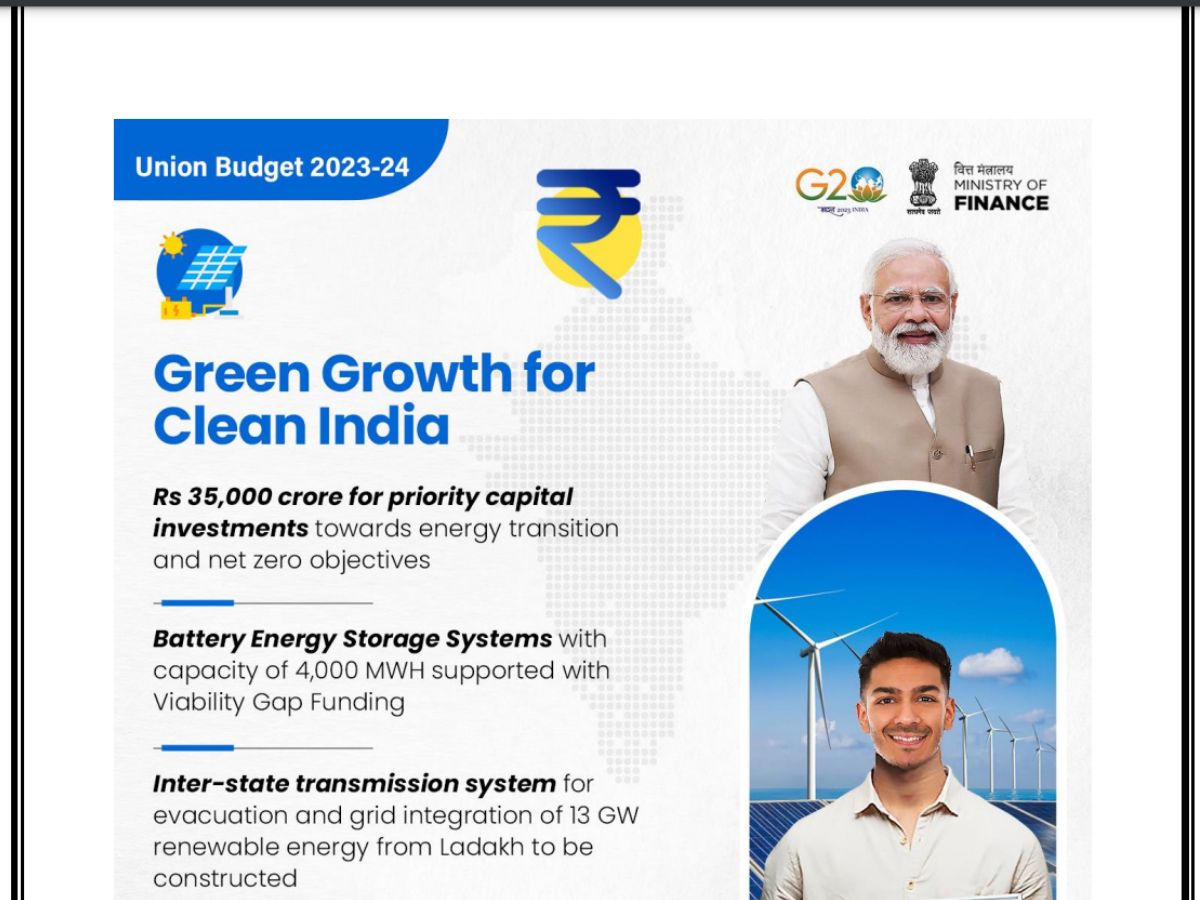
Energy Transition
Battery energy storage systems, and energy storage systems are some of the energy transition projects.
The Union Budget 2023-24 provides Rs 35,000 crore for priority capital investments towards energy transition and net zero objectives.
Battery energy storage systems
Battery energy storage systems with a capacity of 4,000 megawatt hours supported with viability gap funding will also be introduced. Viability gap funding is designed to provide capital support to public-private partnership projects and has the effect of reducing the revenue required to recover costs and provide a financially attractive return for the private sector.
Battery energy storage systems will steer the economy on the sustainable development path. The government will also formulate a detailed framework for pumped storage projects. A pumped storage system captures unused electricity during times of low use.
Inter-state transmission system
In order to ensure green growth, inter-state transmission systems for evacuation and grid integration of 13 gigawatts of renewable energy from Ladakh will be constructed. An investment of Rs 20,700 crore, including central support of Rs 8,300 crore, will be made.
Green Credit Programme
A Green Credit Programme will be notified under the Environment (Protection) Act for encouraging behavioural change. The programme will incentivise environmentally sustainable and responsive actions by companies, individuals and local bodies, and help mobilise additional resources for such activities.
PM-PRANAM
PM-PRANAM, which stands for "PM Programme for Restoration, Awareness, Nourishment and Amelioration of Mother Earth", will be launched to incentivise states and union territories. The scheme will also promote alternative fertilisers and balanced use of chemical fertilisers.
Waste to Wealth:

GOBARdhan scheme
Under the GOBARdhan (Galvanizing Organic Bio-Agro Resources Dhan) scheme, 500 new 'waste to wealth' plants will be established for promoting a circular economy, which is a system that keeps materials, products and services in circulation for as long as possible.
The 500 'waste to wealth' plants will include 200 compressed biogas (CNG) plants, including 75 plants in urban areas, and 300 community or cluster-based plants. A total investment of Rs 10,000 crore will be made.
The finance minister also announced that a five per cent compressed biogas (CBG), which is purified biogas with high methane content, will be introduced for all organisations marketing natural and biogas. Appropriate fiscal support will be provided for the collection of biomass and the distribution of bio manure.
Bharatiya Prakritik Kheti Bio-Input Resource Centres
The government, over the next three years, will facilitate one crore farmers to adopt natural farming, the finance minister said. In order to achieve this, 10,000 Bio-Input Resource Centres will be set up, creating a national-level distributed micro-fertiliser and pesticide manufacturing network.
Protecting Wetlands and Mangroves:
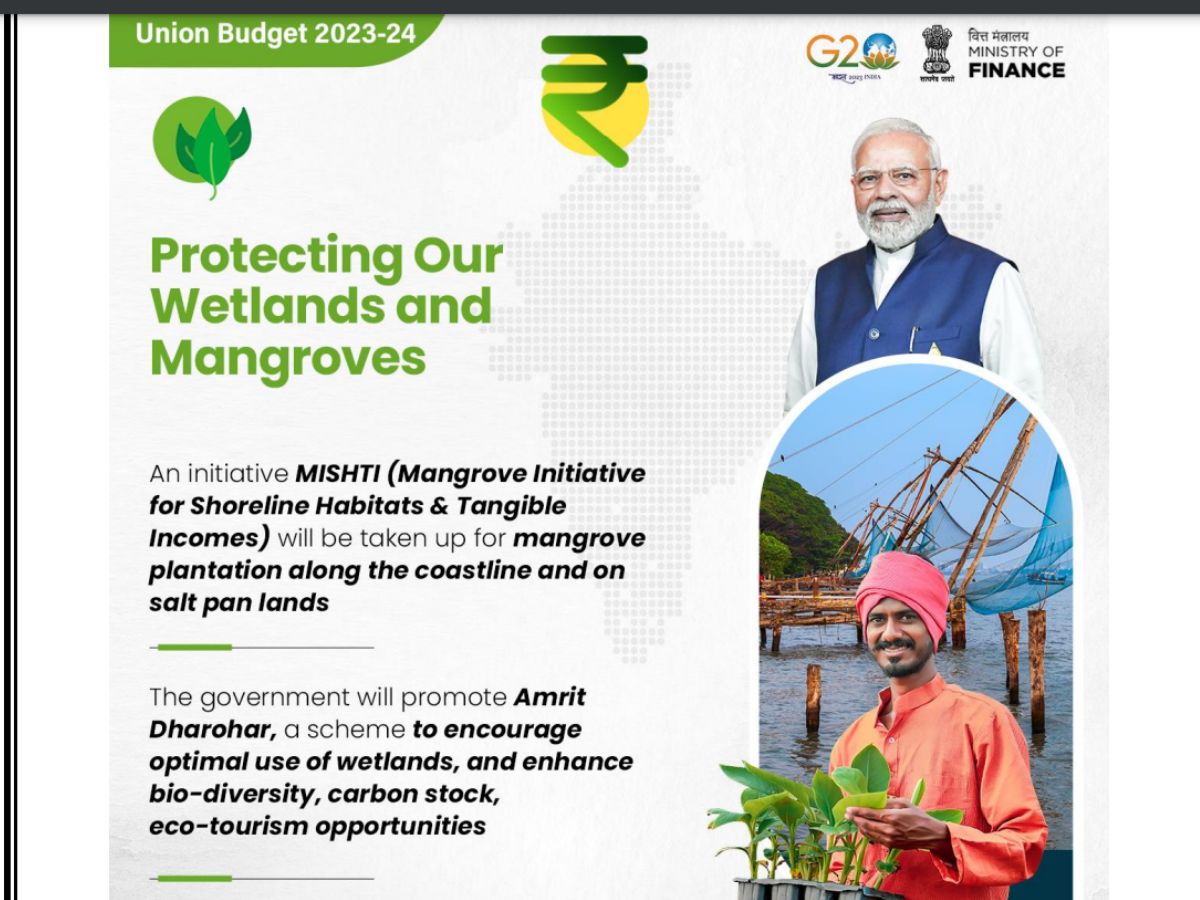
MISHTI
MISHTI, which stands for 'Mangrove Initiative for Shoreline Habitats and Tangible Incomes', is an initiative that will be taken up for mangrove plantation along the coastline and on salt pan lands, wherever feasible. Salt pan lands are flat expanses of ground covered with salt and other minerals, usually shining white under the Sun, and are found in deserts.
Amrit Dharohar
Wetlands, which are areas where water is the primary factor controlling the environment and the associated plant and animal life, are vital ecosystems which sustain biological diversity. Wetlands are also known as Ramsar sites.
The Prime Minister, in his latest Mann Ki Baat, said "Now the total number of Ramsar sites in our country has increased to 75. Whereas, before 2014, there were only 26".
Since local communities have always been at the forefront of conservation efforts, the government will promote their unique conservation values through Amrit Dharohar. This is a scheme that will be implemented over the next three years to encourage optimal use of wetlands, and enhance biodiversity, carbon stock, ecotourism opportunities, and encourage income generation for local communities, according to the finance minister.
Coastal shipping
Coastal shipping is an energy efficient and lower cost mode of transport, and hence, it will be promoted. It is energy efficient both for passengers and freight. Coastal shipping will be promoted through public-private partnership mode with viability gap funding.
Green mobility through vehicle replacement
The government believes that replacing old polluting vehicles is an important part of greening the economy. The finance minister announced that she has allocated adequate funds to scrap old vehicles of the Central Government. She also said that states will be supported in replacing old vehicles and ambulances.
Water For Drought-Prone Regions Of Karnataka

The finance minister announced Wednesday that central assistance of Rs 5,300 crore will be given to the Upper Bhadra Project in the drought prone central region of Karnataka, to provide sustainable micro irrigation and filling up of surface tanks for drinking water. The Upper Bhadra Project is a major lift irrigation scheme under implementation in the central region of Karnataka. Lift irrigation is a method in which water is transported through external energy sources.
Trending News
Top Headlines













